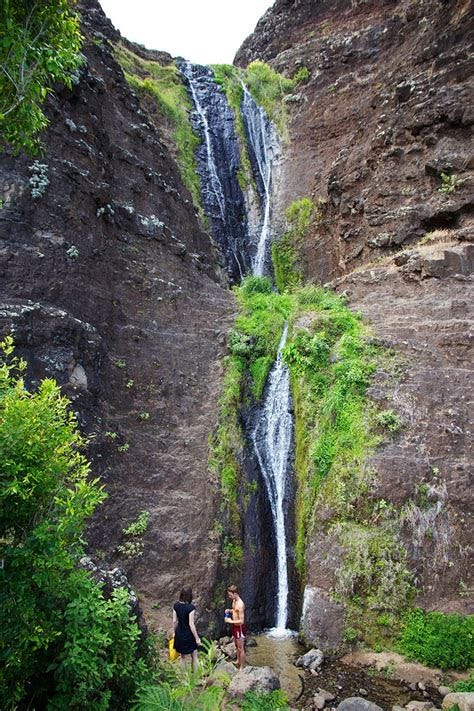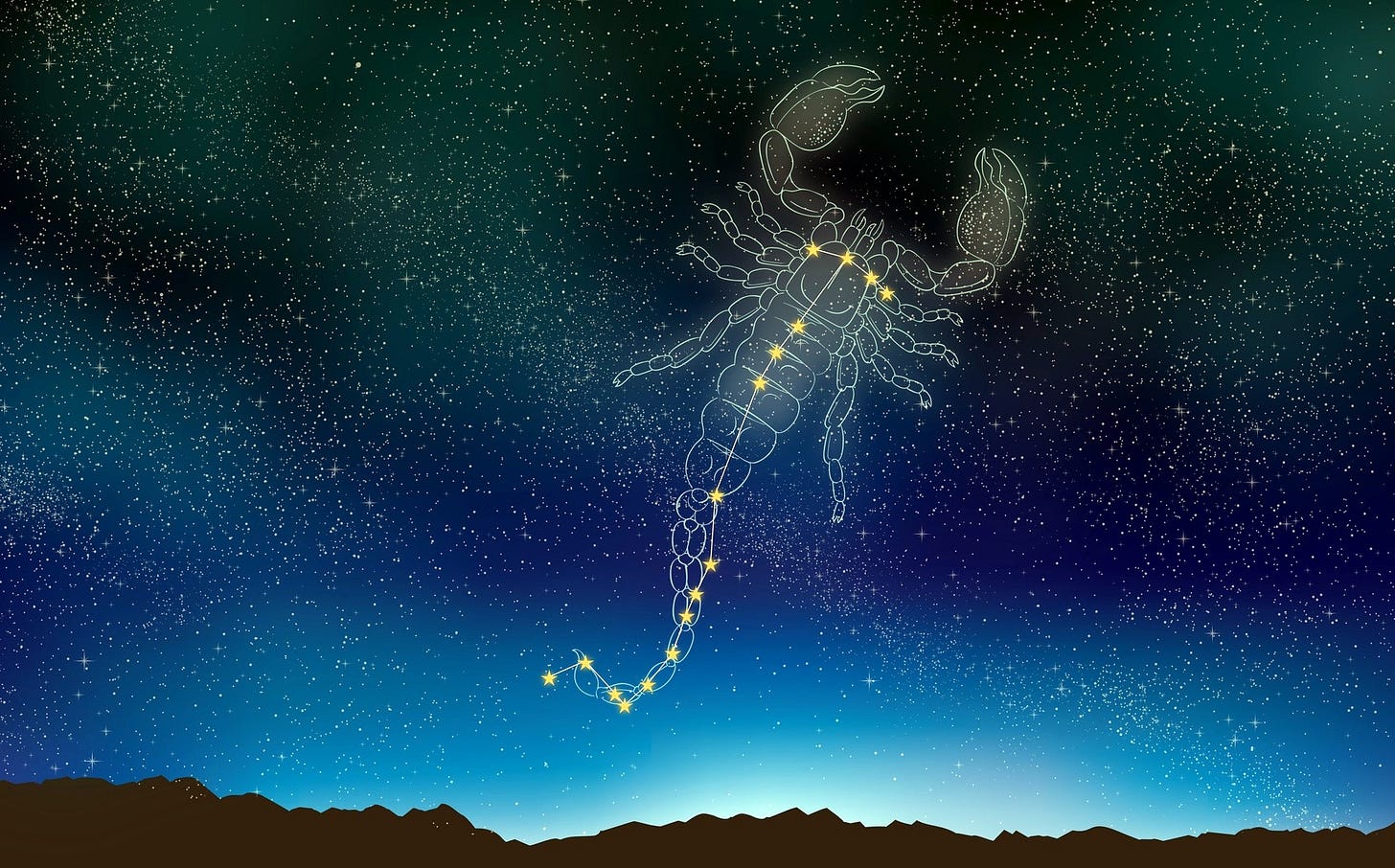While shifting my magnetic field, a New Age guru on Kaua’i said I should go to Kalalau Valley, saying a spiritual community was living there illegally. “The trailhead is at the end of the road,” pointing towards Hanalei. I’m staying at a five-star resort in Princeville and I pass.
That was on vision quest 1, during which Kalalau was mentioned dozens of times, on every island during random encounters. Plus a friend of a friend staying in Kalalau lent me his Big Island house; his friends who gave me the keys had also visited Kalalau. A year later I'm living in Hawaii and my off-the-grid neighbor Olla had lived a year in Kalalau, and introduced me to Ronny dah Mayor of Kalalau, plus others. So I was destined to Go Kalalau. “Go Kalalau” is to go wild; to go to the outer limits; to go pretty much lolo braw!
The Kalalau Trail is rated among the ten most difficult hikes in the world. However the trail is only difficult at the very beginning and towards the end. The middle part of the trail, the four miles between Hanakapiʻai and Hanakoa is merely tedious and an ordeal lugging a load.
The two-miles to Hanakapi’ai is obstacled with tourists who have no idea what they’re stumbling into. When I hiked that part, it tended to be slow and slippery when wet. Plus the stream at Hanakapiʻai can be impassably raging at times.
After fording a placid Hanakapiʻa stream, there is a four-mile meander with no major impediments. About two miles after the stream, the bright orange sunset was turning into a hazy twilight and I was exhausted. Now was the time to consider pitching my second campsite ever.
This time my setup wasn’t good and during my sleepless night I discovered my camp was on an incline. This explained why I kept rolling off my sleeping bag, but it was too dark and too late to do anything about it. Topping that off was some brief but hard rains, which happened a few times that night. This was when I discovered my wallet missing, but hiked on anyway. The next day I made it to Hanakoa about two miles, and right before Crawlers Ledge.
The next difficult stretch begins after Hanakoa. That stream can be challenging during storms too. Next up is Crawlers Ledge, whose cliffside view usually frightens the bejebus out of fainthearted hikers. Surmounting those two obstacles brings you to the summit of Red Hill, and a long and steep incline into Kalalau Valley. Each of these obstacles offers its own special challenges for the hiker to stomp through.
Once at the bottom of Red Hill was Ronny’s camp hidden amidst jungle overgrowth on the Kalalau bluff, and was the Sanctuary Camp hosting communal meals and spiritual pizza parties. From Ronny’s you could use the bluff trail or the tourist trail to reach the river crossing.
After the river is forded, you’ll see the Oleander bushes on your left and that’s where the Kalalau Trail ends. You can now hear the waves crashing on the rocks and smell the scent of their saltwater spray. The path continues on through the Milo Gove to the beach area campsites and that’s where it becomes a smooth walk to the waterfall.
The regulars on hand during my first stay were: Uncle T and his main squeeze Maria; Daisy but not Puff Mike who was staying at 8 Mile; Alaska Dave; Mike the Weedman; Scary Larry, Kelvin with whom I shared a cave during a storm; Brenna whom Ric choked at a Spiritual Pizza party; Rich the psychiatrist from Honolulu, and Fred the Hawaiian botanist who worked for Monsanto. The list goes on and on, so on with the story. Over a five-year period I spent one year living in Kalalau Valley.
Rodney Ahn was not there for my first visit. Rodney was born on Kaua’i, and one of the few local residents of Kalalau. Rodney is famous two things: his Kalalau song, featured in the attached video, and the only outlaw to pass-on in the valley. The video was shot before he passed… I think. To get the full surround sound effect of being in Kalalau, I recommend the audiobook version of Spiritual Pizza.
That first visit was memorable, like when Ric choked Brenna. When I wrote that story two decades later, I discovered several versions of that tall tale, making me wonder just how much of our reality is shared. Nonetheless I have my fair share of corroborated memories.
The multitslented Uncle T played a big part in my Kalalau initiation rites. There’s a long story that will not get told now, but it ended up with T recovering my missing sleeping bag by stealth, and introducing me to the Hippie Kids from Puna. On my hike out, I was out of food and reconnoitered the Hippie Kids loitering at the Hanakoa rest area. They invited me to join them for some breakfast gruel. Hungry and almost 12 hours since a meal, I said yes.
That’s when the magic happened and the Hippie Kids conjured a spontaneous 50th birthday celebration without my asking. Saying that I never imagined this outrageous party happening, they matter-of-fact told me they had. That was the most profound providential experience ever, and not yet fully comprehended.
After my hike out I would find my wallet in my stash at the trailhead. And after my return I had another four months before I was totally out of money, and as mentioned before that was one day. Just like the birthday party, I never imagined that either.
Besides that, why do this?
The Asian philosophies of Daoism and Buddhism suggest convenience was an enemy of humanity, asserting that an overindulgence in expediencies turned humans into machines. In the West, the Stoics, Plato, and the Spartans, held similar views based upon the observed effects of conveniences upon the human psyche. Socrates’ pupil Alcibiades being an excellent example of what happens.
Today it’s troublesome working-around conveniences, and sometimes they’re just too darned convenient to pass. After my first month in the jungle, I began to long for the amenities of civilization: electricity, a soft bed, exotic food easily had. There was a tension between my paradoxical desires to stay and go. Even after several extended sojourns in Kalalau, I favored comforts to the ruggedness of the jungle, and imported as much of the outs as I could.
However, staying in Kalalau for more than a week requires beaucoup supplies deposited in a remote hard to reach location. Once there, daily activities involved hours dealing with survival issues centered around wood, water, food and five-gallon buckets.
Buckets with screw on lids kept food safe from animals like rats, cockroaches, feral cats and the rangers. However camper theft was surprisingly rare. When people give things away, why steal?
No one could live in Kalalau Valley without the river; it was an abundant resource the state could not constrain. Fire wood was plentiful too, mostly dead tree limbs easily “chopped” with a big rock or even your foot. And keeping a stash of dry wood for rainy days was an advanced skill worth knowing.
Setting up a camp for a long stay requires an appreciation for tarp feng shui. Angled tarps create living space among the trees strung with bungie cords. Most nights, stars dotted the camp’s canopy while lullabyed to sleep by the music of crashing waves. Food buckets required stashing in case of raids. A rock hibachi and a big cast iron pan are a jungle culinary toolkit capable of making everything, Kalalau stews to Spiritual Pizzas. Wash the mess at the riverhead or in the ocean or in a bucket.
An hour of cooking commenced with the fire making ritual: fire sticks ready, get the wood, put in the kindling, light the twigs with a candle, blow the kindling with the blow stick, fan the sparks, get more wood, add the bigger pieces and at full flame put on the grill, add the casty or pot or both. Man! That’s cookin’ and that’s a ritual.
My Kalalau MaGuyvering skills gave me the confidence to eliminate many civilized conveniences, e. g. do it myself whenever possible, grow my own, and live without electricity now and again. There’s something to be said for intermittent Stoicism, see above.
Things To Do in Kalalau Valley
This list is not exhaustive, yet provides an overview of potential activities during an extended jungle adventure.
Catch Sunsets on the Bluff
Bluff sunsets are picture perfect. My bluff camp sported an unobstructed view of the western horizon. A great spot to view the sunset as it winks goodbye with a rarely seen “green flash,” which lasts a few milliseconds when seen on a cloudless western horizon. I’ve seen innumerable green flashes, but it’s been a while.
The coloring of the sunset sky ranges from a muted deep red to a slightly dull orange skyscape. Sometimes the sky had a brightly faded olive-green tint to it. One sunset that words cannot describe left me speechless.
Chasing Rainbows
Chasing rainbows yielded scientific discoveries. Never finding a pot of gold, I did find rainbows to be complex lava lamps. From a distance, rainbow colors seem to be one solid color, but up close the color bands were swirling shades of the dominant color. It wasn’t just one color of red, it was every red color swirling in the red band, and ditto the other colors. Pretty amazing!
Watch The Sidereal Zodiac
From my cat bird’s seat on the bluff, I watched the sidereal zodiac spin by. One night looking south towards Nualolo Kai, I saw Scorpio languidly emerging from the Kalepa Ridge. That was my first time seeing Scorpio and she blew me away. Majestic!
Scorpio displayed an eye filling 45 degrees of the night sky and low on the horizon with her distinctive scorpion shape. It’s easy to see why the Hawaiians called her Maui’s Big Fishhook.
Opihi Picking in the Early Morning
An opihi is a Hawaiian Island single-valve shellfish, that lives on shoreline rocks right below the bluff. Even though they were plentiful, those lil suckers are not easy to pick. Prying them off is hard work, and watch out for incoming waves!
After picking a fair amount, I’d hike back and cooked them in olive oil, with a little water, ghee butter and white box wine, making a broth for linguine with white opihi sauce. Ono Brah!
Don’t Just Do Something, Sit There!
When you do absolutely nothing for hours, eventually something will happen. Someone will appear, or something will occur. Like someone appearing out of nowhere with cold beer, and you happen to be sitting there doing nothing when it happens.
That kind of doing nothing, is the kind of nothing doing that can be done in Kalalau Valley. Scary Larry calls it, being “a paid observer on the path of least resistance.” It’s the pièce de résistance of outlaw life.
This list of things to do is by no means exhaustive. And while trying to convey the experiences behind these words, words seem so inadequate. Kalalau Valley is an experience that defines being fenced in by words and governments.
In the next story I’m back at the shack and I embark on a serious gardening project that will produce a cash crop at just the right time. No, it was not corn.
We’re gonna close this out with a great tune from the late, great Alaska Dave, For You! Worth the listen.







